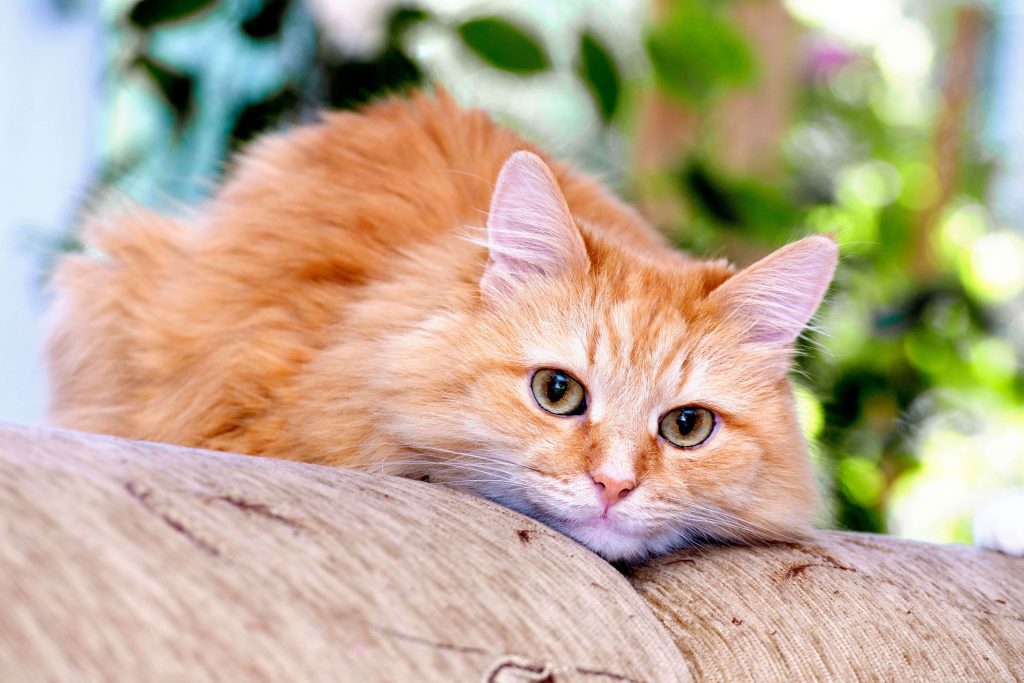Everything you wanted to know about cat reproduction!
Have you always wanted to know more about your cat’s love life? For instance, when are cats sexually mature, when is the right time and how do they mate?
We break down the taboos and share insights into the exciting sex life of our feline friends.
Cats in heat
The time when cats are ready to mate is called “in heat” or “in oestrus“.
Hormones play a decisive role. During this time, oestrogen levels rise, ovulation occurs and the female cat starts looking for a suitable partner. If she finds a nice tomcat, the game is on! But how can YOU tell if your cat is in heat?
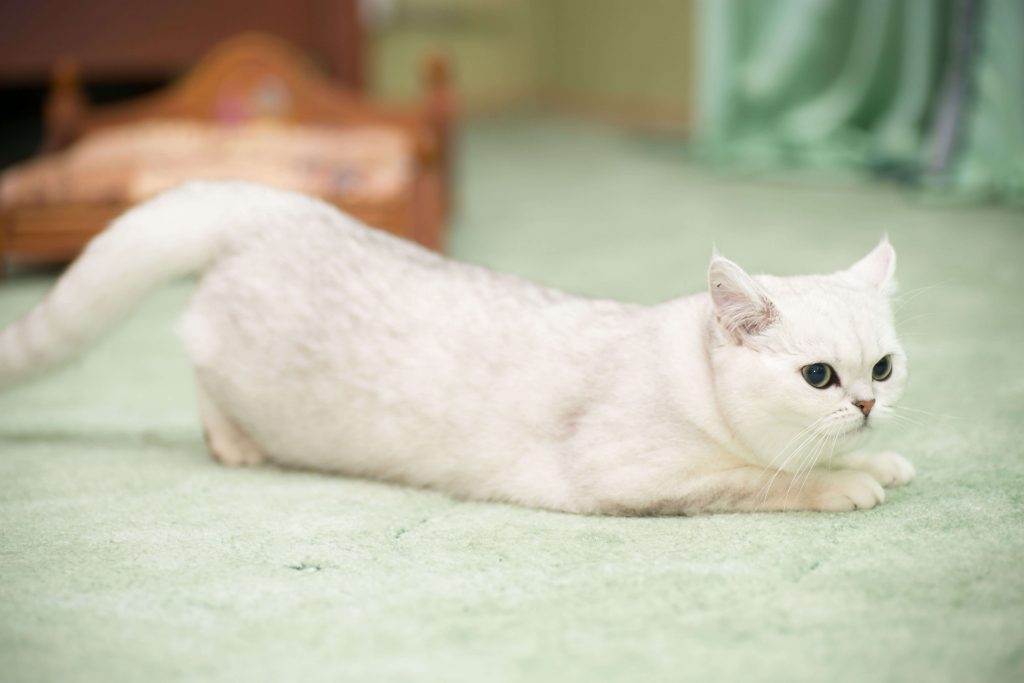
Signs that a cat is in heat
If your cat is rolling around more often, emitting an alluring scent, mewing loudly and possibly even raising her rump and tail up in the air, then it’s probably “oestrus time”! She is almost certainly in heat and ready to mate. Some cats also have a slightly decreased appetite during this time.
Many cats show these signs when they are in heat:
• She seeks your attention more than usual.
• She is (even) more cuddly than usual.
• She rolls around on the floor a lot.
• She marks you and her surroundings more often.
When are cats in heat?

Cats come into heat when they are sexually mature. Depending on their breed, constitution and body weight, female cats become sexually mature at four to twelve months. For toms – male cats – it starts at eight to ten months. You can tell because their urine begins to smell stronger and they thoroughly mark everywhere.
How often are cats in heat?

Cats are very fertile. A female cat that is not spayed can have up to three litters a year! She can become pregnant as soon as she is sexually mature and ready to mate. If she is in heat – that is, ready to mate – she can be mated. If she is sexually mature, not spayed and not mated, this usually happens every 14 days to three weeks.
Do cats have a time of the month?

Cats do not have periods. They do build up a mucous membrane in the uterus before they go into heat so that the fertilised egg can implant, but they do not shed this mucous membrane if the egg is not fertilised. The mucous membrane is absorbed in the cat’s body itself, and not shed externally. Cats therefore don’t have menstrual bleeding.
Does a cat go through the menopause?
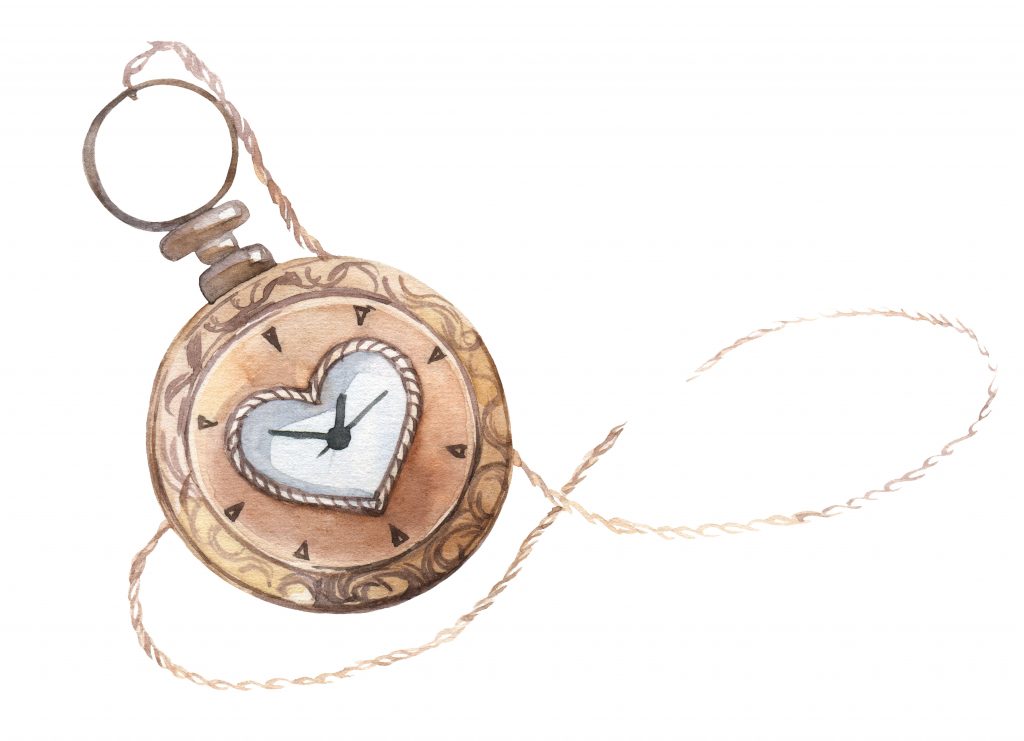
Cats do not go through the menopause and can become pregnant until old age. With increasing age, it’s even possible that her cycle is shortened. Cats may come into heat more frequently than in their younger years. Every now and then, a so-called “permanent heat” occurs. This is not healthy and not at all pleasant for cats.
Cat mating
The season is here, the sun is warm, flowers are blooming…the days are getting longer, brighter and milder, butterflies flit across the landscape, but also in the bellies of cats. It’s time! Unneutered cats can’t stay inside any longer! They go on the prowl looking for a mate and get to the business of creating offspring by mating.
The mating season in cats
Mating time is seasonal in cats. When it stays light for twelve hours and hormone levels rise, cats get frisky. This lasts for about a week. But a female cat is only ready to mate on four of these days. It’s a real challenge for the male cats, who leave their home and garden during this time and stay by the side of their chosen one…
Courtship behaviour in cats
There is something in the air – a very special scent! Normally, the “lust phase” and the hunt for a partner last until a suitable mate is found. Male cats “sniff out” a willing female for miles, follow her and make loud howling noises. But no matter what they do, ultimately only she chooses the candidate(s) she allows to come close.
For near neighbours nearby, the howling can be quite nerve-wracking…
The mating act in cats
A male cat must be steadfast and patient. He must spend a lot of time with his beloved beforehand, and must not leave her side until she finally acknowledges him and invites him to mate. The male cat then grips the female cat by the neck with his teeth, holds her tight and mounts her. Not only once, but up to five times! Otherwise ovulation is not triggered.
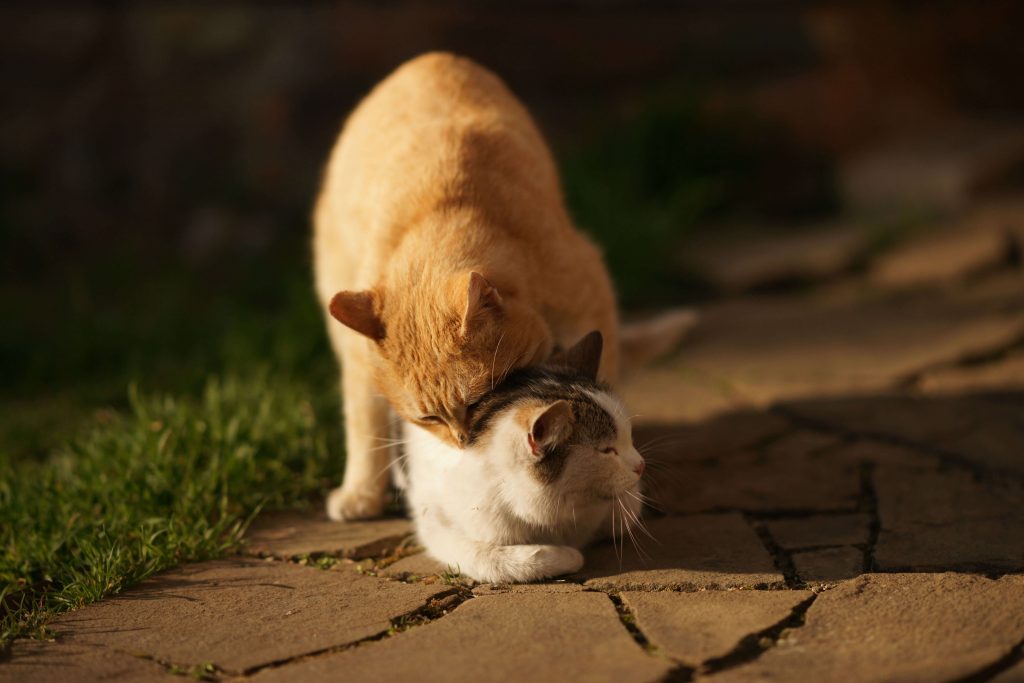
Why do cats scream during mating?
Cats scream when mating because the male penis has barbs that hurt when pulled out in the opposite direction. The barbs scrape along the inner walls of the cat’s vagina – and this makes the mating act quite painful.
How is ovulation triggered in cats?
Painful penetration is not the design of a masochistic male, but a tool of nature. Only repeated stimulation by the barbs on the penis triggers ovulation in the cat. The eggs can then be fertilised for the following two days. If a cat mates with different males during this time, the kittens will have different fathers and look very different.
When a cat is pregnant
Your cat is pregnant? Many questions are probably going through your mind. Would you like to make this time as pleasant as possible for the expectant mother and help her bring her offspring into the world in good health? We’ve put together a list of things to consider and what pregnant cats need: A virtual birth preparation so to speak!
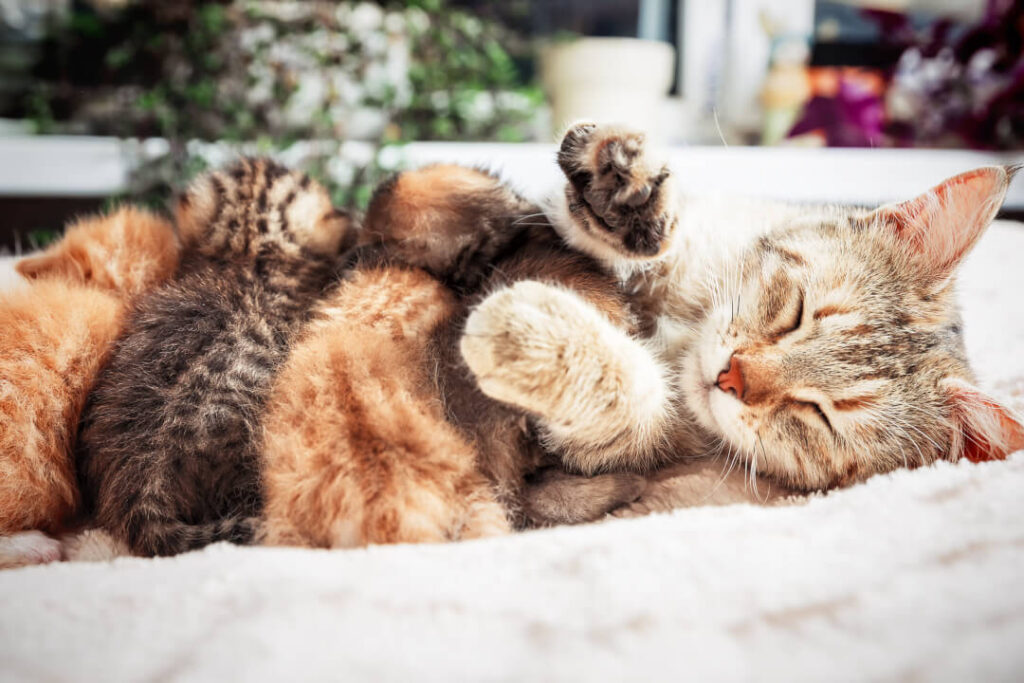
Breeding cats
Would you like to breed cats? You should carefully consider whether you really want to take on this responsibility. There is already a large number of cats, of all ages, who are “struggling” to find a home. Rescued strays, surplus offspring, orphans from divorce or cats from household breakups already fill animal shelters. You must be certain that your future kittens will find a good home.
Why breed cats
Why do people breed cats? Perhaps you believe kittens are adorable or breeding is lucrative?
This is definitely the wrong attitude! Professional breeding is not a casual pastime! Breeders need comprehensive cat knowledge and guarantee they can handle cats in exactly the right way. Otherwise they’re just another multiplying the population.
What is responsible cat breeding?
Many people claim to breed cats responsibly, but the reality is different. Unfortunately, there are some “black sheep” among cat sellers who pretend to be breeders, but produce animals unscrupulously. Kittens are not products: they are living creatures
What makes a responsible cat breeder?
- A good breeder keeps animals indoors and provides family contact.
- Cats may have a litter no more than once a year.
- A breeder must be knowledgeable about the breed and the needs of his/her cats and be able to provide comprehensive information about them.
- Membership of a pedigree cat club is an indication, but unfortunately not a 100% guarantee of a serious breeder.
- When buying a pedigree cat, proof of its pedigree should be supplied and the owner’s register updated after the purchase.
- In the case of high-maintenance cats (e.g. long-haired cats), the breeder should have already accustomed the kittens to a grooming routine.
- Breeders should inform buyers in advance about what the kittens need: what kind of cat litter, what kind of litter tray, what kind of food, and if there are there any allergies or intolerances.
- The kittens should have already been examined by a vet, vaccinated, dewormed and free of parasites at the time of collection and a vaccination certificate provided.

Cat genetics
Anyone who wants to breed cats should also be familiar with cat genetics – i.e. the theory of heredity.
Genetic information in cats is stored in 19 chromosomes. When the egg and sperm fuse during reproduction, new pairs of chromosomes are formed which contain all the inherited characteristics and traits that will be passed on to the next generation of cats: the length of the coat, coat colour, coat markings, body build or the cat’s teeth.
SEXES OF KITTENS
Why are there no males among “tortoiseshell cats” – that is, cats with three coat colours? And why are there mostly only ginger tomcats?
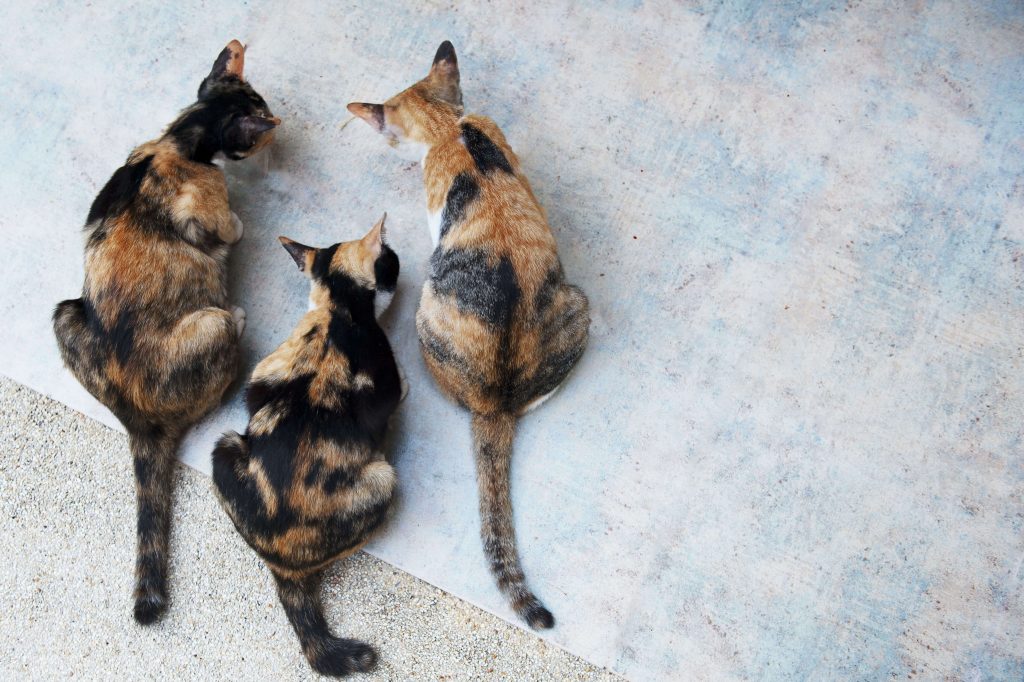
It has to do with chromosomes. They determine the sex and coat colour of the kitten. A Y-chromosome has no colour associated with it, and an X-chromosome brings exactly one colour.
Inheritance of coat colour in cats
Certain traits are inherited in cats in a recessive or dominant form. Some dominant traits only come into play if another gene is also present that sets the other one in motion. Some traits are also inherited by sex – like ginger coat colour.
